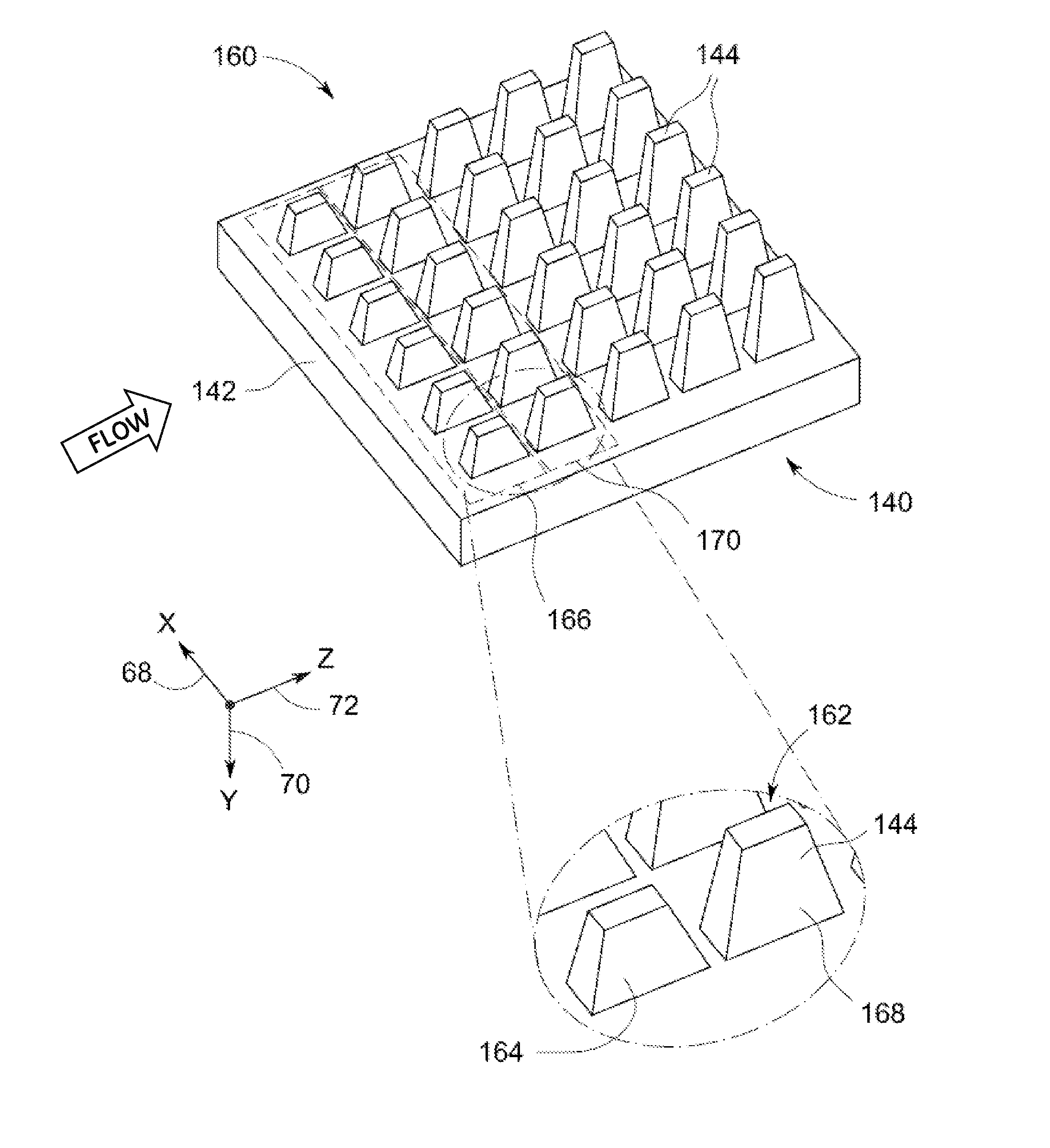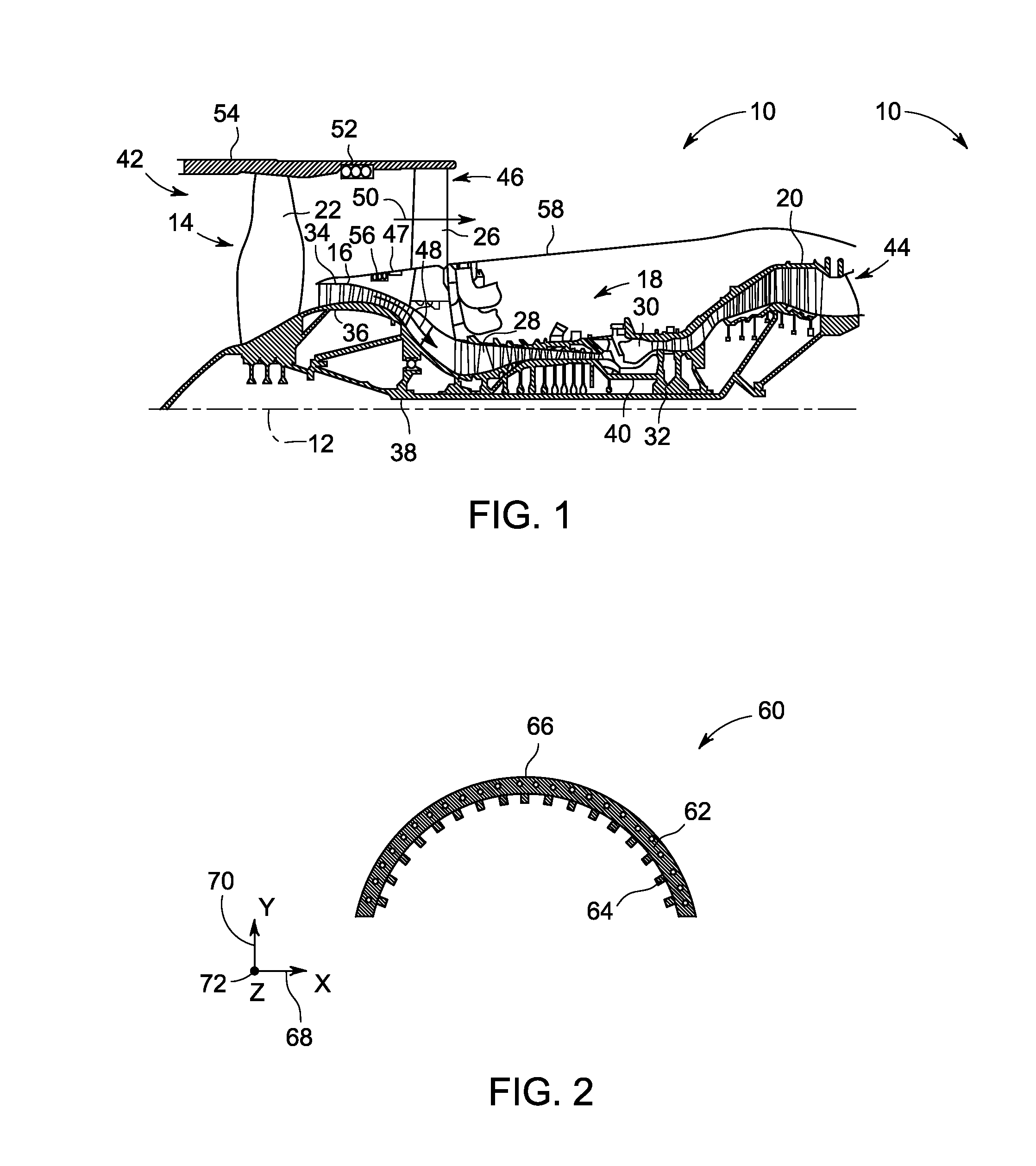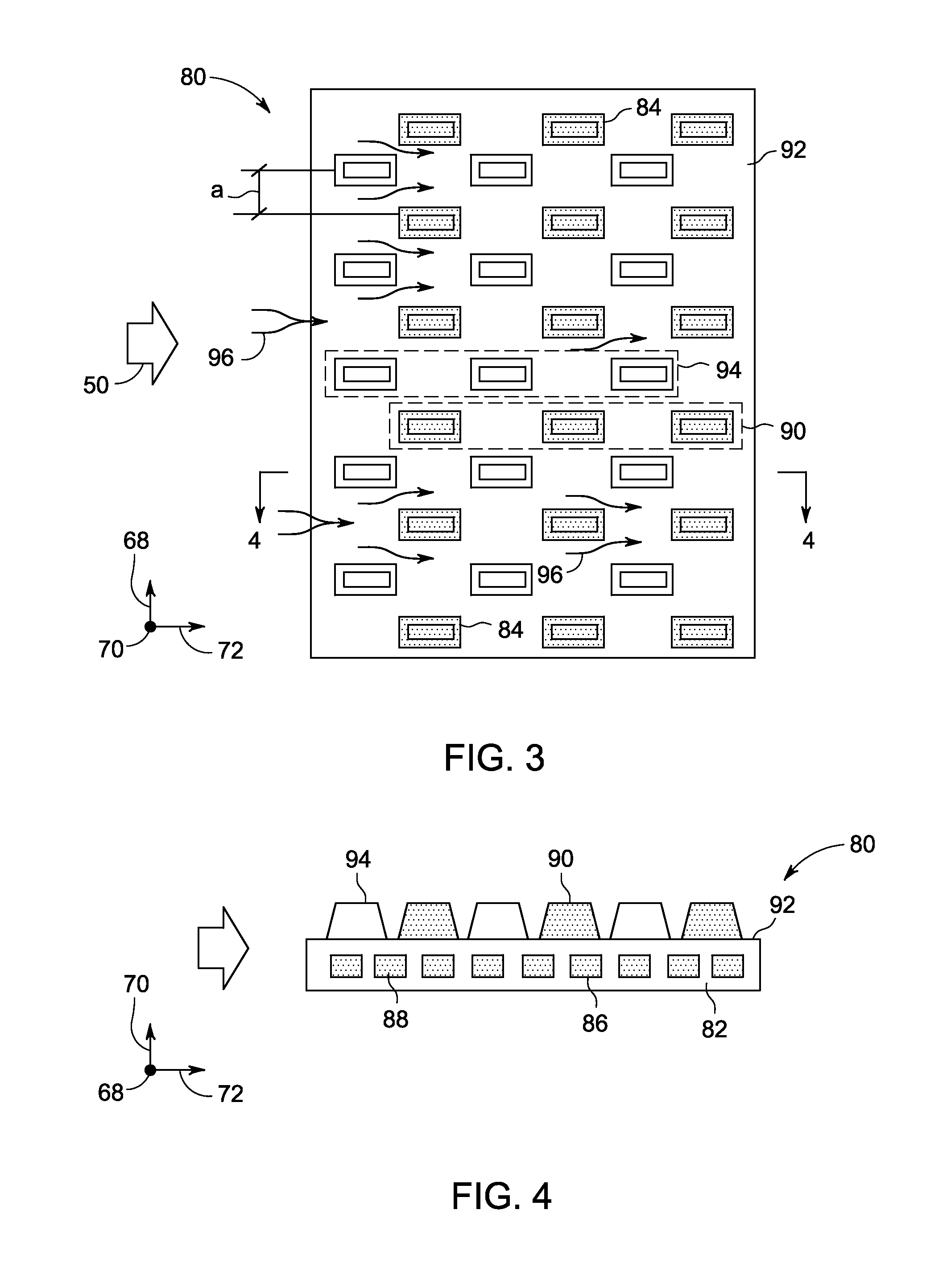Air-cooled engine surface cooler
a surface cooler and air-cooled technology, applied in the field of turbines, can solve the problems of obstructing air flow, limited space in this region of the engine, and newer engine technologies, which have more heat that must be dissipated, so as to increase the turbulence level of the fluid flowing, promote increased mixing, and reduce the effect of heat transfer
- Summary
- Abstract
- Description
- Claims
- Application Information
AI Technical Summary
Benefits of technology
Problems solved by technology
Method used
Image
Examples
Embodiment Construction
[0024]Embodiment disclosed herein relate to surface coolers and more particularly to enhanced surface coolers for use in a nacelle of an engine such as an aircraft engine. The exemplary surface coolers may be used for providing efficient cooling. Further, the term “surface coolers” as used herein may be used interchangeably with the term “heat exchangers”. As used herein, the surface coolers are applicable to various types of turbomachinery applications such as, but not limited to, turbojets, turbo fans, turbo propulsion engines, aircraft engines, gas turbines, steam turbines, wind turbines, and water turbines. In addition, as used herein, singular forms such as “a”, “an”, and “the” include plural referents unless the context clearly dictates otherwise.
[0025]FIG. 1 is a schematic illustration of an exemplary aircraft engine assembly 10 in accordance with the present disclosure. Reference numeral 12 may be representative of a centerline axis 12. In the exemplary embodiment, the engin...
PUM
| Property | Measurement | Unit |
|---|---|---|
| thickness | aaaaa | aaaaa |
| diameter | aaaaa | aaaaa |
| thermally conductive | aaaaa | aaaaa |
Abstract
Description
Claims
Application Information
 Login to View More
Login to View More - R&D
- Intellectual Property
- Life Sciences
- Materials
- Tech Scout
- Unparalleled Data Quality
- Higher Quality Content
- 60% Fewer Hallucinations
Browse by: Latest US Patents, China's latest patents, Technical Efficacy Thesaurus, Application Domain, Technology Topic, Popular Technical Reports.
© 2025 PatSnap. All rights reserved.Legal|Privacy policy|Modern Slavery Act Transparency Statement|Sitemap|About US| Contact US: help@patsnap.com



